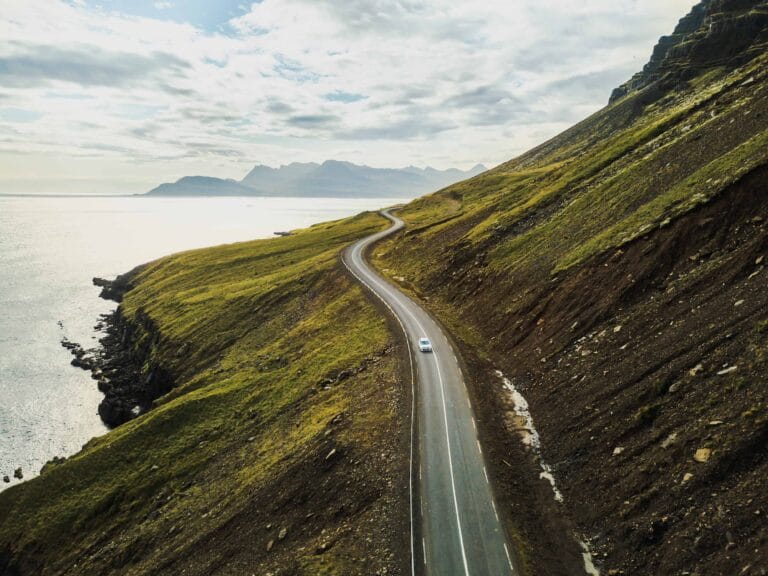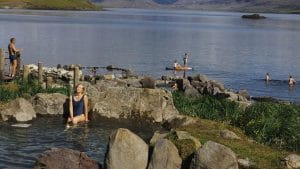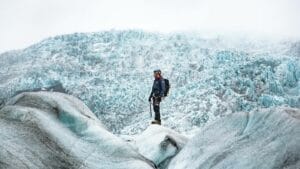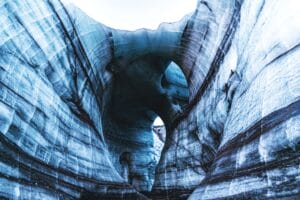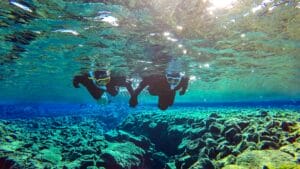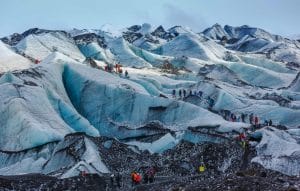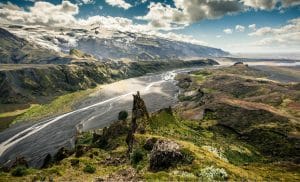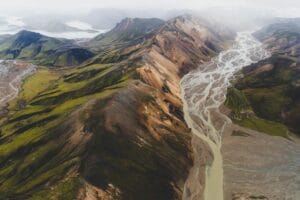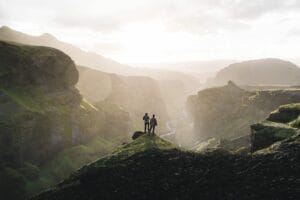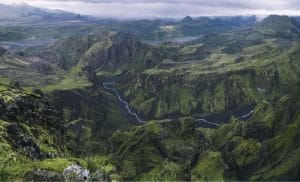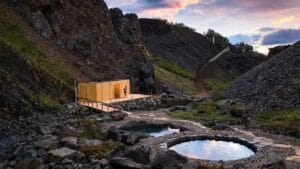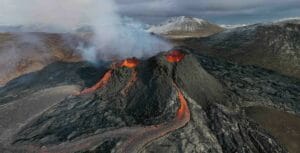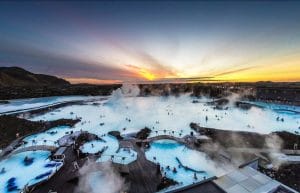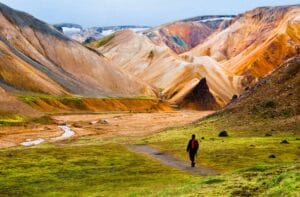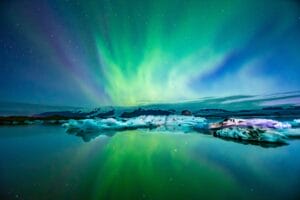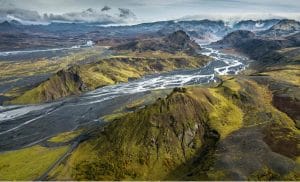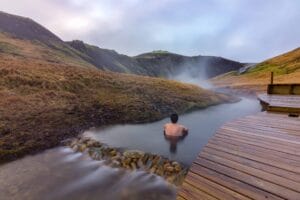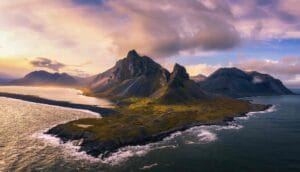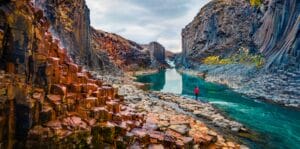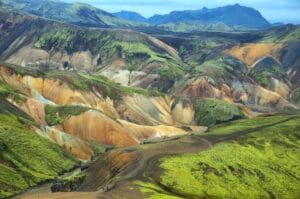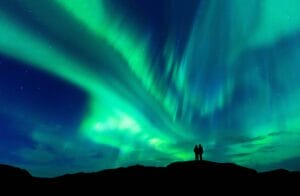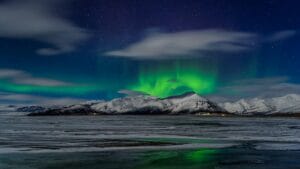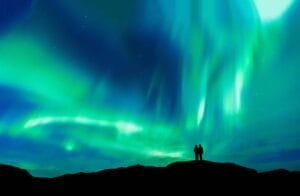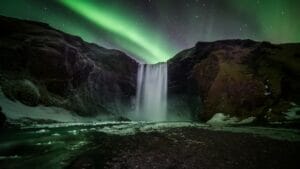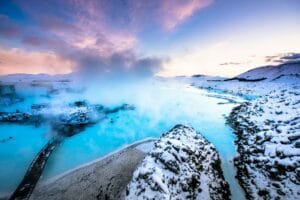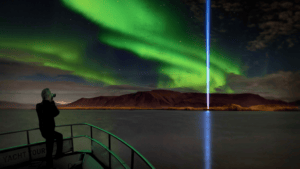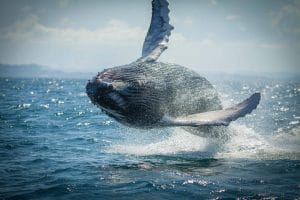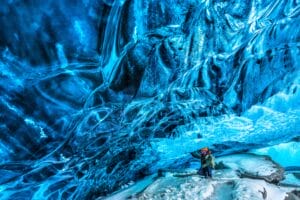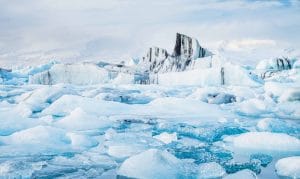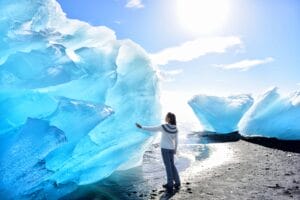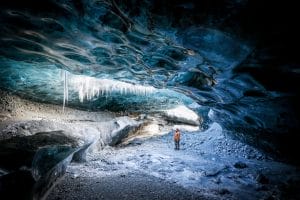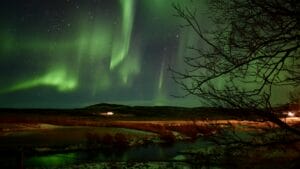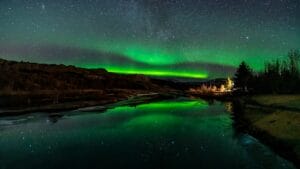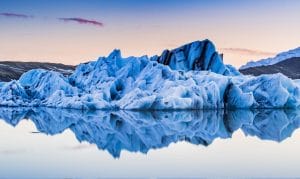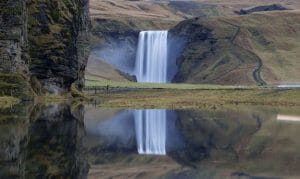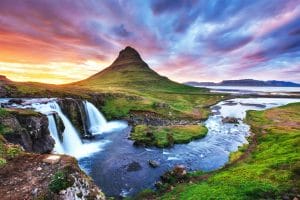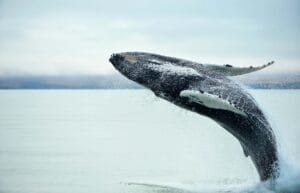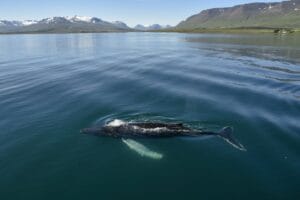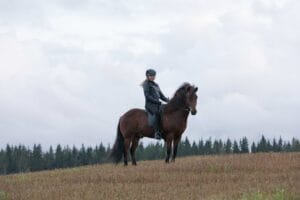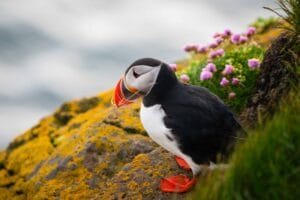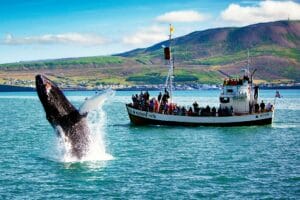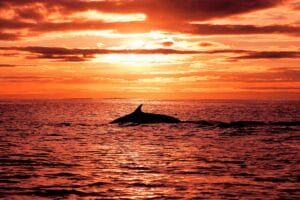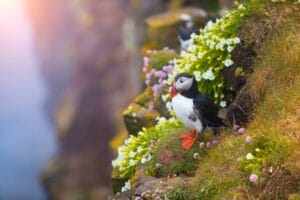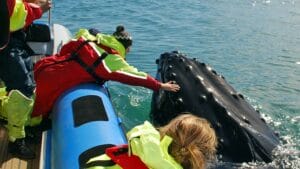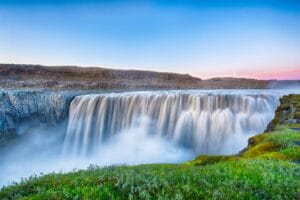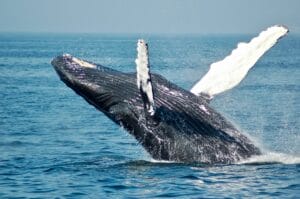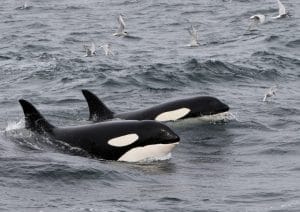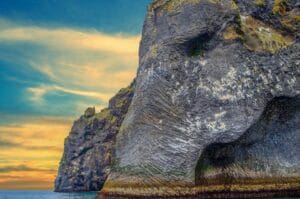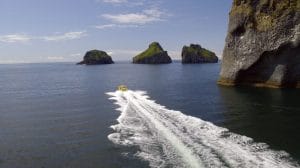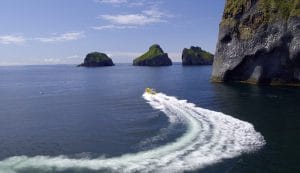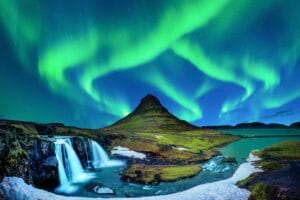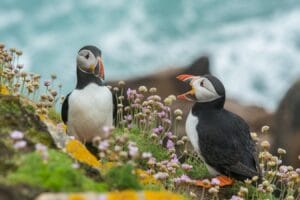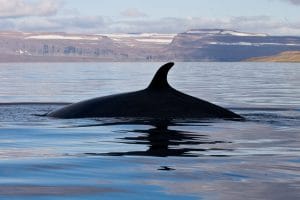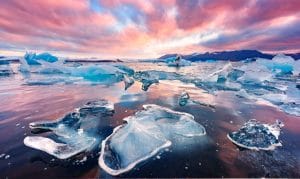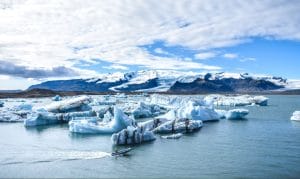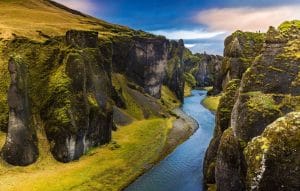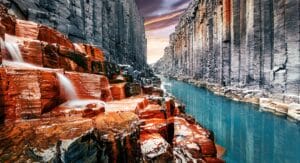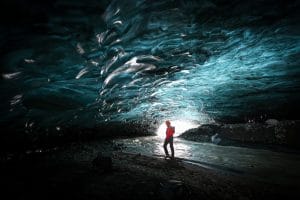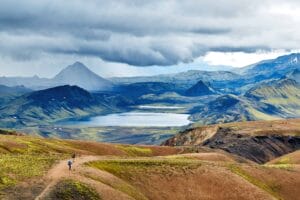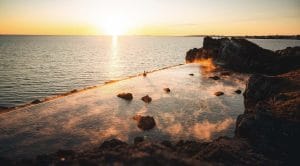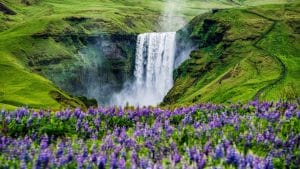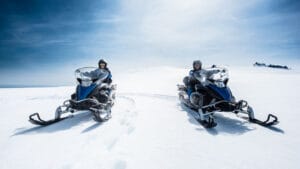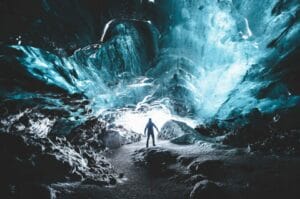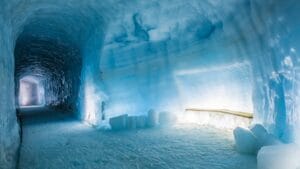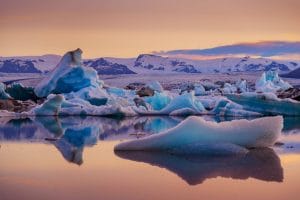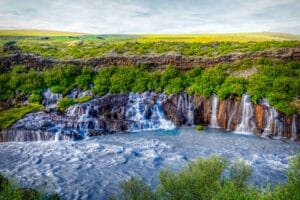Iceland in August presents a captivating tapestry of natural beauty and outdoor adventures. As summer reaches its peak, the landscape transforms into a kaleidoscope of vibrant colors. The days are long, with almost continuous daylight, providing ample time to explore the country’s diverse attractions.
Iceland is a bucket-list destination for many, and August is one of the most popular months to visit. With its moderate weather, long daylight hours, and an abundance of festivals and natural beauty, August presents a perfect time for travelers who want to explore Iceland’s unique landscapes and culture. This guide will take you through everything you need to know about visiting Iceland in August, covering the weather, daylight hours, activities, and more.
One of the highlights of Iceland in August is the increased chance of spotting the elusive Northern Lights at the end of the month. Although the aurora borealis is more commonly associated with winter, early signs of its return begin to appear in the late summer sky, creating magical moments for those lucky enough to catch a glimpse.
The month also offers opportunities for unique cultural experiences, with various festivals and events celebrating Icelandic music, arts, and traditions. From the dynamic city life of Reykjavik to the tranquil beauty of the countryside, Iceland in August beckons travelers with its unparalleled landscapes and the promise of memorable, sunlit adventures.
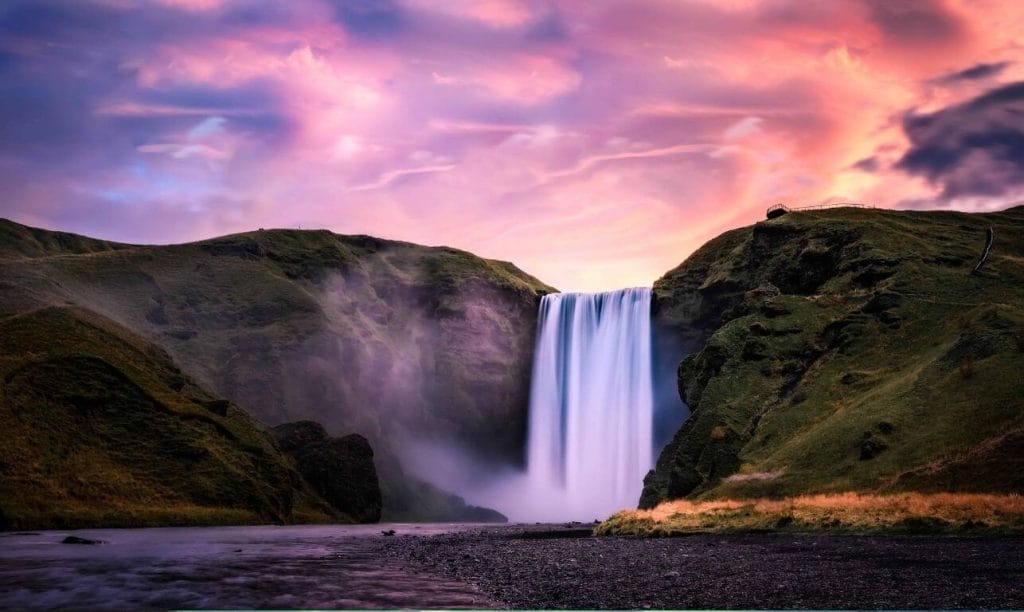
Weather in Iceland in August
August in Iceland is considered late summer, and it is one of the warmest months of the year. However, keep in mind that Iceland’s “warm” is relative compared to most places.
- Average Temperature: Daytime temperatures in August generally range from 10°C to 15°C (50°F to 59°F). However, it’s not uncommon for temperatures to rise up to 20°C (68°F) during particularly sunny days. Nighttime temperatures drop, hovering around 7°C to 10°C (45°F to 50°F).
- Rainfall: August marks the start of Iceland’s autumn, so you can expect a bit more rain compared to the peak of summer in June and July. The country sees an average of 12 rainy days in August, so it’s best to come prepared with waterproof gear.
- Wind: Iceland is known for its wind, and August is no exception. While the winds tend to be lighter than in the colder months, sudden gusts can catch you off guard, especially in coastal or elevated areas.
- Overall Climate: Iceland’s weather in August is unpredictable, so layers are your best friend. You might experience sunshine, rain, and cool winds all in the same day.
Daylight Hours in August
One of the perks of visiting Iceland in August is the long daylight hours. While the famous midnight sun of June and July is fading, there’s still plenty of daylight to make the most of your time.
Early August: During the first half of August, Iceland enjoys about 18-20 hours of daylight. The sun typically rises around 4:30 AM and sets around 10:30 PM, giving you ample time to explore.
Late August: By the end of the month, the days are getting noticeably shorter, with around 14-16 hours of daylight. The sun rises at approximately 6:00 AM and sets around 9:00 PM.
The lingering twilight in the evening makes August ideal for outdoor activities and sightseeing without feeling rushed by early sunsets.
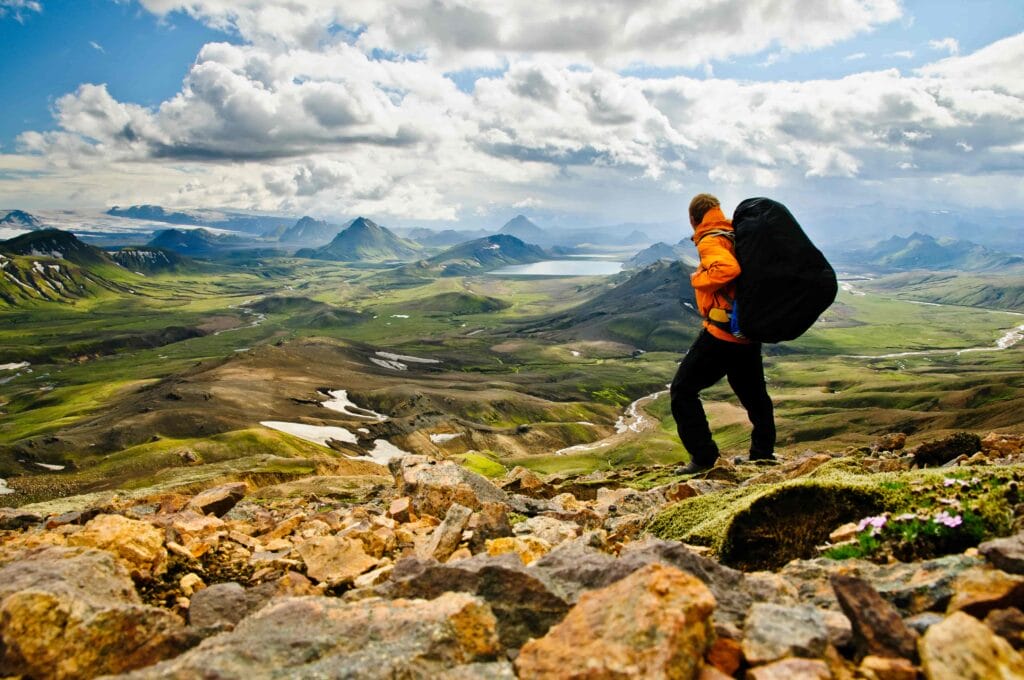
Pros and Cons of Visiting Iceland in August
Pros:
- Pleasant Weather: August is one of the warmest months, with relatively mild temperatures.
- Extended Daylight: You have long daylight hours to explore without feeling pressed for time.
- Abundant Activities: Many tours, including glacier hikes, whale watching, and puffin watching, are in full swing.
- Festivals and Events: Iceland is buzzing with cultural events, concerts, and celebrations in August, making it a lively time to visit.
- Less Crowded Than July: While still busy, August is less crowded than July, giving you more breathing room at popular sites.
- Northern Lights Possibility: By late August, there’s a slight chance of catching the Northern Lights if the skies are clear, as nights are getting darker.
Cons:
- Higher Prices: August is still peak tourist season, so flights, accommodation, and tours are more expensive.
- Crowded Attractions: Tourist hotspots like the Golden Circle, Blue Lagoon, and popular hiking trails can get busy.
- Unpredictable Weather: Iceland’s weather is notoriously fickle, so you must be prepared for sudden changes.
- Fewer Puffins: Puffins begin to leave Iceland at the end of August, so if bird-watching is high on your list, come earlier in the month.
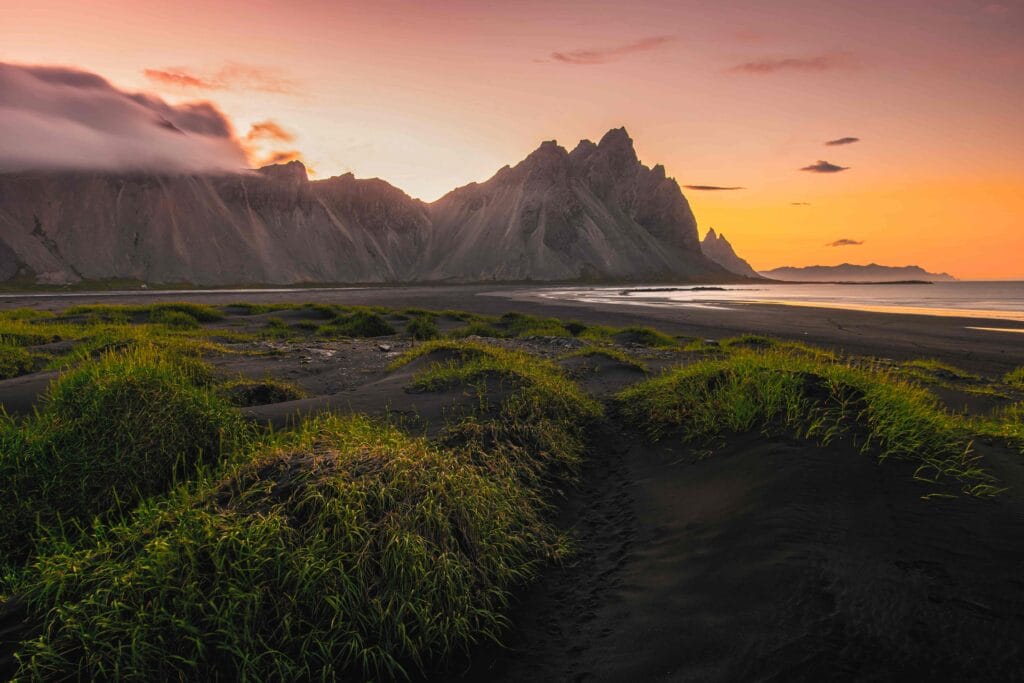
What to Do in Iceland in August
August offers a wide array of activities and experiences for travelers. Whether you’re looking to hike, explore waterfalls, or indulge in local culture, there’s something for everyone.
1. Hiking

August is a fantastic month for hiking in Iceland, with favorable weather and accessible trails. Some top hiking destinations include:
- Landmannalaugar: Located in the highlands, this area is famous for its colorful rhyolite mountains and geothermal hot springs. The Laugavegur Trail—one of Iceland’s most iconic multi-day hikes—begins here and stretches to Þórsmörk.
- Fimmvörðuháls: This challenging but rewarding hike takes you between the glaciers Eyjafjallajökull and Mýrdalsjökull, past waterfalls and lava fields.
- Þórsmörk: Hiking in Þórsmörk is a unique and breathtaking experience. Nestled between glaciers in Iceland’s southern highlands, Þórsmörk offers dramatic landscapes with lush valleys, rugged mountains, and stunning panoramic views. Popular trails, like the Laugavegur and Fimmvörðuháls routes, lead hikers through diverse terrains—from volcanic craters to glacier rivers—making it a paradise for nature lovers and adventure seekers. The area’s mix of green forests and otherworldly rock formations creates a magical setting for both experienced hikers and casual walker.
2. The Northern Lights
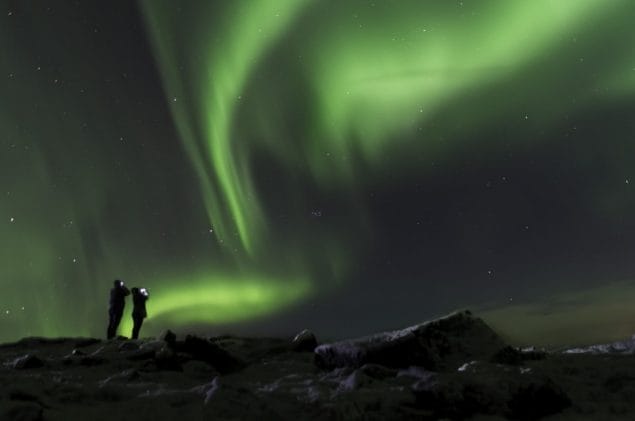
While the daylight hours are longer than the night at the starting of the month, the end brings in an ample amount of chances to witness the northern lights. August is the month that brings the start of the northern lights in Iceland. Sunsets around 8 o’clock in the evening leaving enough dark hours to enjoy the northern lights. Moving away from the city and the light pollution to a distant location is a rather good idea so that you can see the aurora properly. Northern Light tours start bookings in late august so you can have a professional tour guide booked to guide you through to the best places to enjoy the lights.
3. Whale Watching
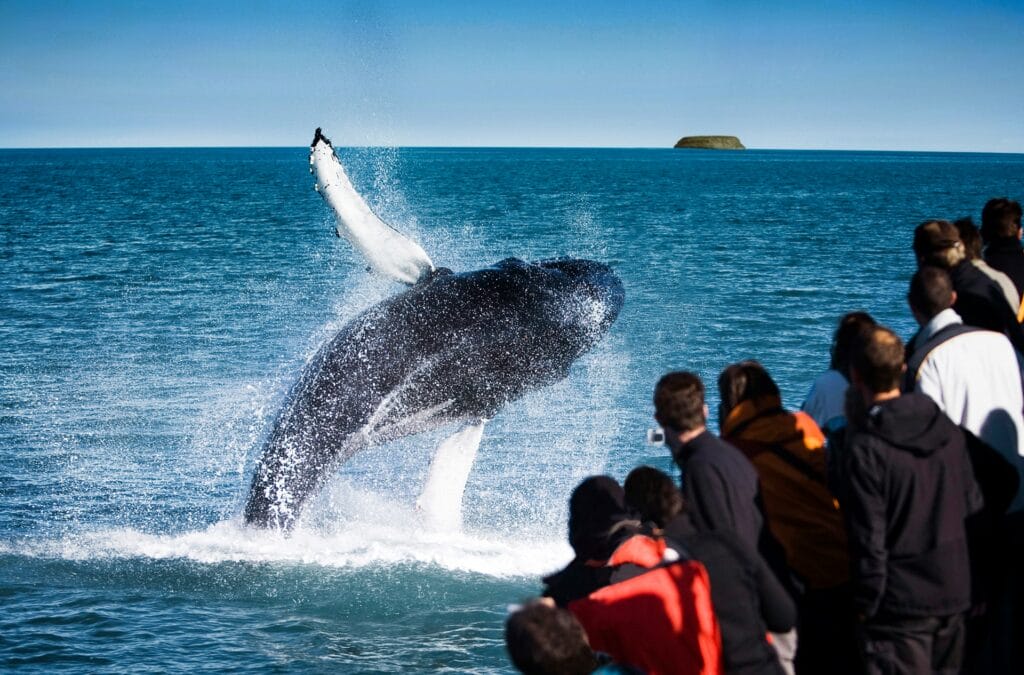
August is one of the best months for whale watching in Iceland. You can spot humpback whales, minke whales, dolphins, and even blue whales in the waters around Iceland.
- Húsavík: Known as the whale-watching capital of Iceland, Húsavík offers some of the best chances to see these majestic creatures up close.
- Reykjavik: Whale-watching tours also depart from Reykjavik, making it convenient for travelers based in the capital.
- Akureyri: Whale watching from Akureyri is an unforgettable experience in Eyjafjörður, Iceland’s longest fjord. Spot humpback whales, dolphins, and other marine life against a backdrop of stunning mountain scenery, making it a must for nature lovers
4. Puffin Watching
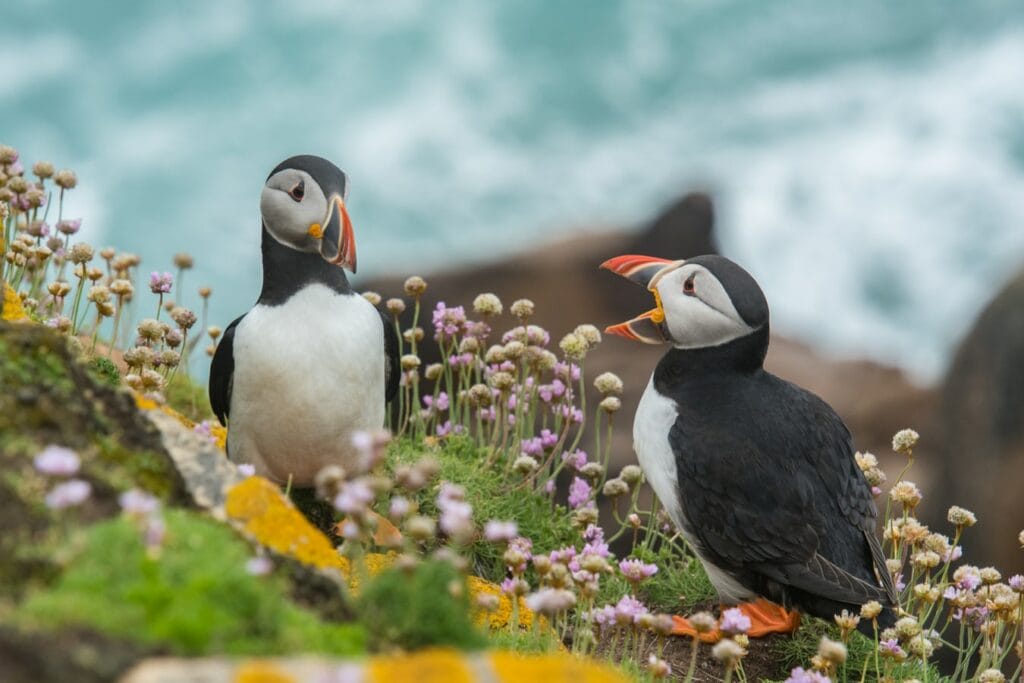
While puffins begin to migrate at the end of August, you can still catch sight of them early in the month.
- Puffin Islands: Located just outside of Reykjavik, you can take a boat tour to see puffins at Puffin Island, where you’ll witness these charming birds in their natural habitat.
- Dyrhólaey: This rocky promontory in South Iceland is home to puffins and offers stunning coastal views.
- Westman Islands: Known for having one of the largest puffin colonies in Iceland, the Westman Islands are a short ferry ride from the mainland.
5. Glacier Exploration
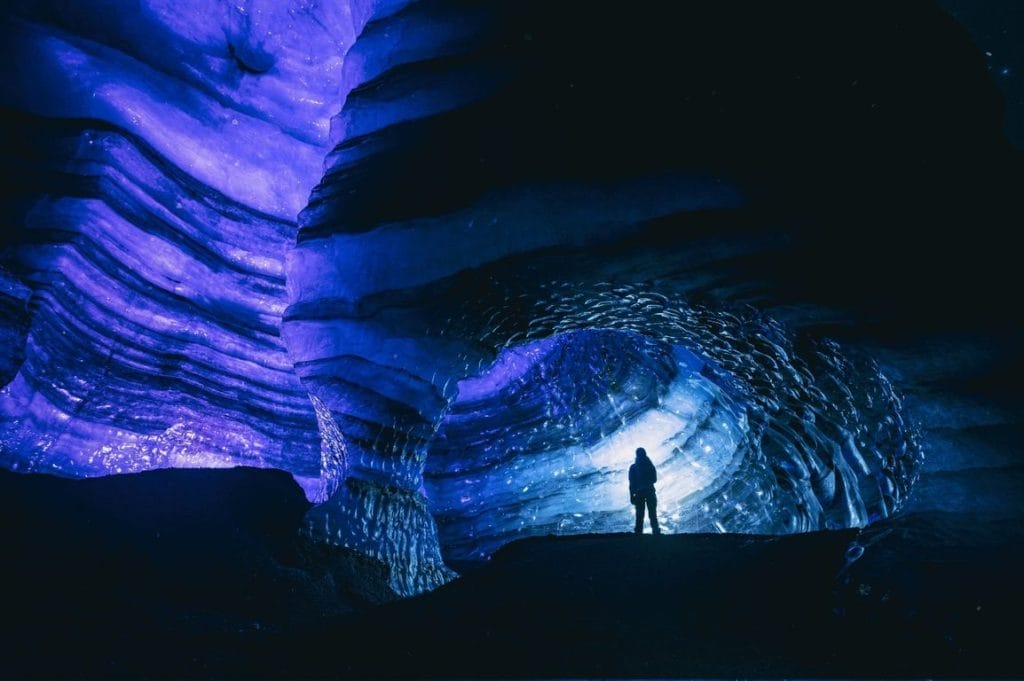
Though summer is nearing its end, glacier tours are still available in August and a very popular activity among travelers.
- Glacier Hikes: Explore glaciers like Sólheimajökull and Vatnajökull on guided hikes.
- Ice Caving: While ice cave tours are more common in winter, there are a few year-round caves to explore in August. Katla Ice Cave is the most popular ice cave accessible all year. Another way to explore the glaciers up close is on the Into the Glacier Tour where you will walk hundreds of meters inside the ice tunnels under the glacier.
6. Visiting Waterfalls

August is an excellent time to visit Iceland’s stunning waterfalls, as the warmer weather causes glacial meltwater to swell, making these natural wonders even more impressive. Whether you’re exploring the Golden Circle or heading along the South Coast, you’ll encounter some of the most breathtaking waterfalls in the world. We at Iceland Travel Guide can help you plan the perfect sightseeing trip, ensuring you experience the best attractions Iceland has to offer.
Gullfoss: Located along the famous Golden Circle route, Gullfoss is one of Iceland’s most iconic waterfalls. Its two-tiered cascade thunders down into a dramatic canyon, making it a must-see for anyone visiting the region.
Skógafoss: A towering 60-meter (197-foot) waterfall on the South Coast, Skógafoss is an awe-inspiring sight. You can get close to the waterfall at its base or climb the steps beside it to enjoy a scenic viewpoint with panoramic views of the surrounding landscapes.
Seljalandsfoss: Also located on the South Coast, Seljalandsfoss offers a unique experience. You can actually walk behind this waterfall, making it one of the most photogenic and interactive waterfalls in Iceland.
Háifoss: Situated in the Highlands of Iceland, Háifoss is the country’s third-highest waterfall, plunging 122 meters (400 feet) into a breathtaking gorge. It’s a bit off the beaten path but well worth the trip for adventurers seeking stunning views and fewer crowds.
Dettifoss: Located in the north, Dettifoss is Europe’s most powerful waterfall, known for its raw, thunderous energy. The force of the water crashing into the Jökulsárgljúfur canyon is a sight to behold, making it one of Iceland’s top natural attractions.
Hraunfossar and Barnafoss: Found in West Iceland, these unique waterfalls are located side by side. Hraunfossar is a series of gentle cascades flowing through a lava field, while Barnafoss, just a short walk away, rushes through a narrow gorge, offering two very different but equally beautiful experiences.
Goðafoss: Known as the “Waterfall of the Gods,” Goðafoss is located in North Iceland and has a rich historical and cultural significance. Its semicircular shape and powerful flow make it one of the most beautiful waterfalls in the country.
With so many incredible waterfalls to explore, Iceland Travel Guide can assist you in creating a custom itinerary that includes these must-see sites. Whether you’re traveling the South Coast, venturing into the Highlands, or exploring the north, we can help you make the most of your trip by guiding you to Iceland’s best natural wonders.
7. Hot Springs and Geothermal Pools
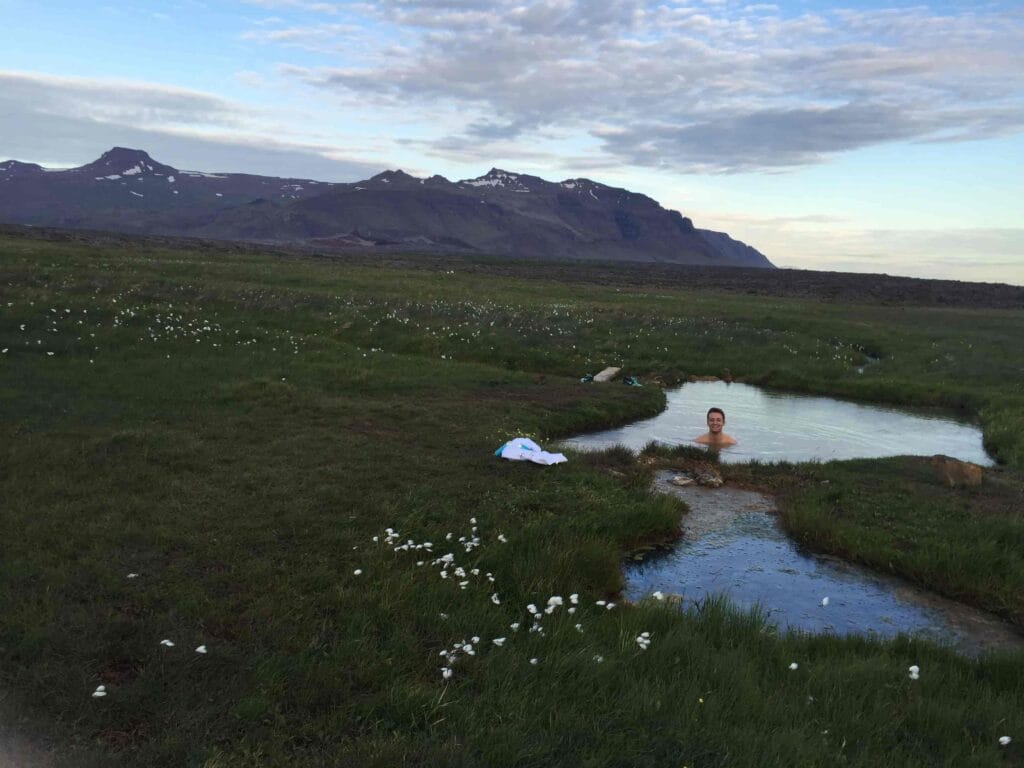
Iceland is famous for its breathtaking landscapes, but its natural hot springs and geothermal pools are just as enchanting. Whether you’re looking to relax or rejuvenate, the country offers a variety of geothermal experiences to suit your needs. Here are some of the top hot springs and pools to visit, and Iceland Travel Guide is here to help you plan the perfect itinerary to include these must-see attractions.
The Blue Lagoon: Perhaps the most famous geothermal spa in Iceland, the Blue Lagoon is a must-visit destination located just a short drive from Reykjavik. This luxurious spa is known for its striking milky-blue waters, rich in silica and minerals, which are said to have therapeutic properties. The lagoon is surrounded by a lava field, creating a surreal and breathtaking environment. Visitors can indulge in various treatments, including massages and facials, or simply unwind in the warm, mineral-rich waters while taking in the stunning views of the surrounding landscape.
Secret Lagoon: For those looking for a quieter alternative to the Blue Lagoon, the Secret Lagoon, located in the small village of Flúðir near the Golden Circle, is an excellent choice. This geothermal pool is one of the oldest in Iceland, boasting a natural and rustic atmosphere. The waters are kept at a comfortable temperature, making it a perfect spot to relax after a day of exploring.
Mývatn Nature Baths: Situated in North Iceland, Mývatn Nature Baths are often referred to as the northern counterpart to the Blue Lagoon. The mineral-rich waters here offer stunning views of the surrounding geothermal landscapes, including volcanic craters and lush vegetation. The baths are less crowded than the Blue Lagoon, providing a tranquil setting to soak and unwind.
Sky Lagoon: A relatively new addition to Iceland’s geothermal offerings, Sky Lagoon is located near Reykjavik and boasts a breathtaking infinity pool that seems to merge with the Atlantic Ocean. With stunning views of the surrounding landscape, visitors can enjoy a multi-step wellness experience that includes a hot lagoon, a sauna, and a steam room. The Sky Lagoon also features a 7-step ritual designed to promote relaxation and rejuvenation, making it a perfect escape from the hustle and bustle of everyday life.
Hvammsvik: Nestled in the scenic Hvalfjörður, Hvammsvik is a hidden gem known for its serene geothermal pools that blend seamlessly with nature. This picturesque spot offers a peaceful retreat, with multiple hot tubs and natural springs to enjoy. The stunning coastal views and quiet surroundings make it an ideal location for a relaxing day.
Vök Baths: Located near Lake Urriðavatn in East Iceland, Vök Baths offer a unique geothermal experience. The baths feature floating geothermal pools surrounded by beautiful nature, allowing visitors to soak while enjoying the stunning views of the surrounding landscape.
GeoSea: Situated in the charming town of Húsavík, known as the whale-watching capital of Iceland, GeoSea offers a unique geothermal seawater experience. With stunning views of the ocean and surrounding mountains, visitors can soak in the warm seawater while watching for passing whales.
Best Day Tours to Take in Iceland in August
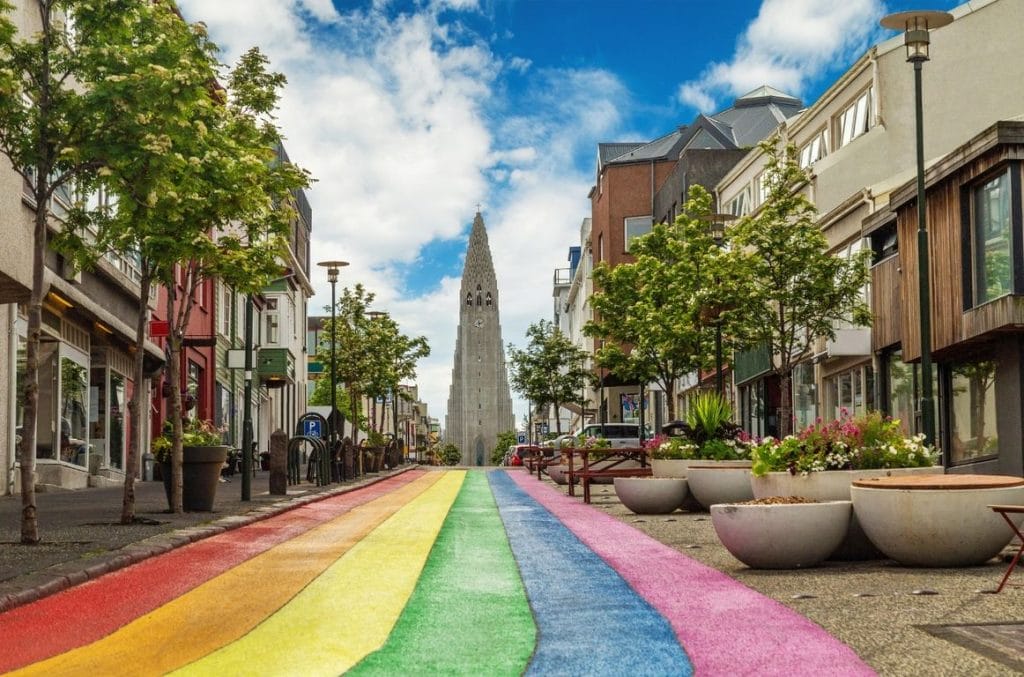
What’s Happening in Iceland in August
August is a vibrant month in Iceland with several festivals and events taking place:
Verslunarmannahelgi (Merchant’s Weekend): Celebrated on the first weekend of August, this is one of the largest holiday weekends in Iceland, marked by music festivals, camping trips, and gatherings around the country.
Reykjavik Culture Night: Held in mid-August, Reykjavik Culture Night features free concerts, art exhibitions, and street performances throughout the city, culminating in a fireworks display over the harbor.
Food & Fun: August is the season for fresh local ingredients, including seafood and lamb. Restaurants across the country feature seasonal menus highlighting Icelandic cuisine.
Westman Islands Festival: Held on the Westman Islands (Vestmannaeyjar), this popular festival celebrates the island’s culture with music, bonfires, and fireworks.

What to Pack for Your Trip to Iceland in August
August is a very beautiful time to visit Iceland – the weather is warm and soothing. The air can still be chilly but not freezing. Although the countryside can feel a bit colder as compared to the city. So, make it a point to pack all the essentials with you so that you are prepared for every situation.
- Layered Clothing: Pack base layers, mid-layers (like fleece or wool), and a waterproof, windproof outer shell.
- Hiking Boots: Sturdy, waterproof boots are essential for hiking or walking on uneven terrain.
- Rain Gear: Bring a lightweight, packable rain jacket and waterproof pants to stay dry in case of sudden showers.
- Hat and Gloves: Even in summer, the weather can be chilly, especially in the mornings or evenings.
- Swimsuit: Don’t forget your swimsuit for soaking in geothermal pools and hot springs.
- Reusable Water Bottle: Iceland’s water is some of the purest in the world, so bring a reusable bottle to fill up from natural springs or taps.
Driving in Iceland in August
Driving in Iceland during August is an experience like no other, as the summer season provides a unique opportunity to explore the country’s stunning landscapes, vibrant wildlife, and iconic attractions. Whether you’re planning to navigate the famous Ring Road or venture into the Highlands, here’s everything you need to know about driving in Iceland during this beautiful month.
Road Conditions
In August, the majority of Iceland’s roads, including the Ring Road and main routes to popular tourist destinations, are generally in good condition. However, if you plan to explore the Highlands or more remote areas, be aware that some F-roads (mountain roads) may still be closed due to snow or mud, even in late summer. A 4×4 vehicle is recommended for these roads, as they can be challenging and require a bit of off-road driving experience. Always check for any road closures and conditions before setting out.
Tips for Driving in Iceland
Fill Up on Gas: Fuel stations can be sparse in rural areas, so fill up whenever you have the chance, especially before heading into the Highlands or less populated regions.
Follow the Rules: Iceland has strict driving regulations, including a zero-tolerance policy for drinking and driving. Always wear seatbelts, adhere to speed limits, and be cautious on gravel roads.
Stay Alert: Be mindful of sheep and other wildlife that may cross the road, particularly in rural areas.
Plan Your Route: Having a flexible itinerary is great, but make sure to plan your route ahead of time, especially if you want to see specific attractions or participate in activities.
